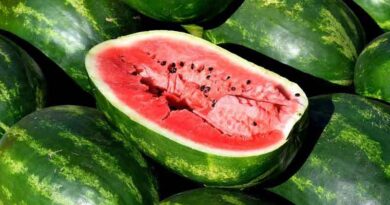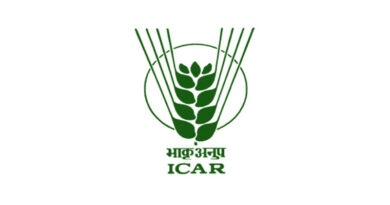Scientists Say Diversified Weed Control is Critical to Pumpkin Production
18 October 2022, Colorado: From carved Halloween jack-o-lanterns to tasty holiday pies, pumpkins are central to many a seasonal celebration. Scientists with the Weed Science Society of America (WSSA) say it takes effective weed control, though, to bring those prized pumpkin crops to market.
Illinois is by far the largest U.S. producer of pumpkins. Growers there harvest more than twice as many acres of the crop as those in other states. About 80 percent of the Illinois pumpkin crop is devoted to nutrition-packed fruit that is processed and canned for food use. The remaining 20 percent is grown for ornamental uses.
While most “standard” pumpkins weigh from about eight to 25 pounds, there are small varieties that can easily fit in the palm of your hand, as well as “jumbo-sized” varieties that can weigh a half ton or more.
Why is Illinois such a great spot for pumpkin production? Alan Walters, Ph.D., a professor at Southern Illinois University, says the crop benefits from the state’s moderate temperatures and fertile soil. It is also popular among growers since it can be planted in rotation with corn, soybean and other crops common to the region – without the need for irrigation.
Despite these advantages, pumpkin production would be severely limited without effective weed control, Walters says. When left unmanaged, weeds can significantly reduce yields and fruit size. Weeds can also harbor insects, inhibit spray coverage when pesticides are applied and increase the incidence of plant diseases by limiting air movement. Weeds can also complicate the already labor-intensive process of harvesting pumpkins – requiring workers to search through weeds to locate pumpkins and cut them away from the vine.
Nathan Johanning, M.S., a researcher and extension educator at the University of Illinois, recently surveyed pumpkin growers attending a statewide conference about their weed control challenges. Their responses showed that the pigweeds – both waterhemp and Palmer amaranth – are by far the most challenging weeds encountered in Illinois pumpkin fields. Other weeds cited as problematic included morningglories, weedy grasses and ragweed.
There are relatively few herbicides registered for use in pumpkin crops, Johanning says. That makes diversified weed management tactics a must – especially since herbicide resistance is on the rise. The pigweeds, for example, have evolved resistance to multiple herbicides with different modes of action.
Johanning encourages growers to vary the types of herbicides used rather than rely on a single mode of action. He also recommends use of cultural weed control techniques, such as hand weeding, hoeing, plasticulture, tillage and crop rotation. Cover crops and growing pumpkins in rotation with wheat or other grains can be especially good options, he says. The residue left in the field by the prior crop not only provides a layer of weed protection, but also keeps pumpkins free from dirt and mud.
“Above all, I advise growers to be proactive,” Johanning says. “Plant pumpkins in weed-free fields. If weeds emerge later, make certain they aren’t allowed to go to seed.”
Also Read: Indian fertilizer shop to become PM Kisan Samridhi Kendra; PM Modi to launch 600 Kisan Samridhi Kendras
(For Latest Agriculture News & Updates, follow Krishak Jagat on Google News)















